A Dog’s Guide to Personal Finance 🐕
Happy Friday, you stunningly beautiful and handsome people! (I don’t know what you actually look like in real life, but when I close my eyes and imagine, you’re all gorgeous!)
Today’s guest poster — Jesse from the Best Interest blog — learned all his personal finance knowledge from his dog! Just kidding — Jesse has a natural gift for breaking down complex personal finance concepts and explaining them in simple (and funny) ways! I think you’ll enjoy this post that explains necessary personal finance practices … using stories any pet owner can relate to :)
********
A Dog’s Guide to Personal Finance
This is Sadie. Like all dogs, she’s the best dog — apologies to the logicians out there. Sadie is going to show us a dog’s guide to personal finance. It’s gimmicky, but there will be plenty of dog pictures. And even I was surprised by some of the obvious corollaries. Let’s embark! (Get it?)
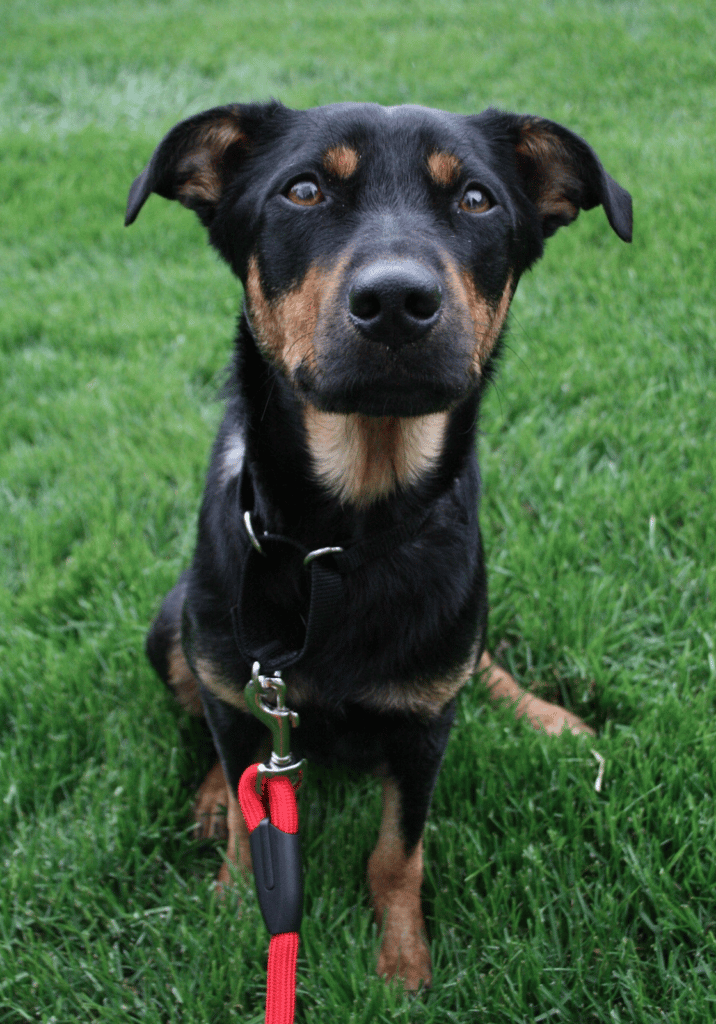
Bury It For Later
Dogs like treats. About a quarter of the time, Sadie will take her treat, her bone, her new shiny toy, and bury it. She does it in stealth mode. I don’t catch her in the act. All I find is a dog’s attempt at refilling a hole, and zero attempt at actually fixing the landscaping — c’mon Sadie!
For humans, burying cash in the ground isn’t smart. And neither is burying food (unless you’re hoping to let some seeds flourish). But what is smart is proverbially burying your cash into an emergency fund, or saving for later in life via a long-term investment.
Emergency funds and long-term investing are two different ways of saying, “I don’t need this bone money today, but I think I’ll need it someday in the future.” Sadie is smart!
So, what’s the difference between an emergency fund and long-term investing? Liquidity. That’s a fancy way of describing how quickly you can get your money when you need it.
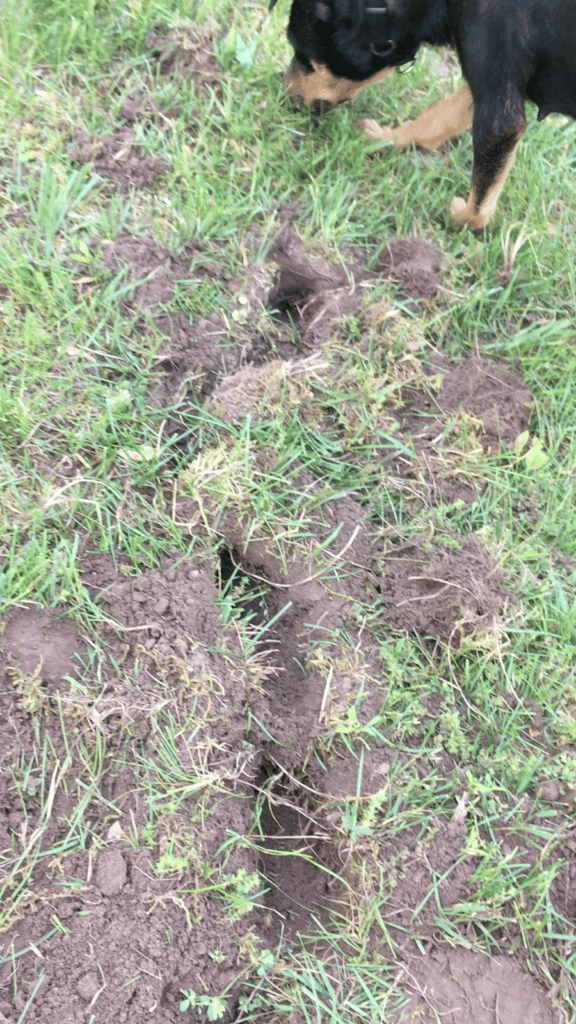
An emergency fund should be highly liquid, meaning you could access it right away if needed. That’s why many people keep their emergency fund in a high-yield savings account (HYSA). This is most similar to Sadie’s buried bone. It’s ready for retrieval at a moment’s notice.
But long-term investing is a choice designed for 10, 20, or even 30+ years in the future. Some long-term accounts — like a 401(k) — might actually penalize you if you try to access your money before a certain age. Before you bury that long-term bone, you’ve got to be sure you don’t want it anytime soon.
I know life is short — memento mori — but saving money for later is a worthwhile safety net.
Automation
Sadie’s habits are second nature. She eats breakfast and dinner at regular times. She has her afternoon nap. And her morning nap, her late morning nap, and her post-dinner nap. The same regularity applies to high-energy playtime and nature’s calls.
Suffice to say, Sadie’s routine is pretty automated. Not electronically automated, but naturally automated. She doesn’t have to think twice about her essentials.
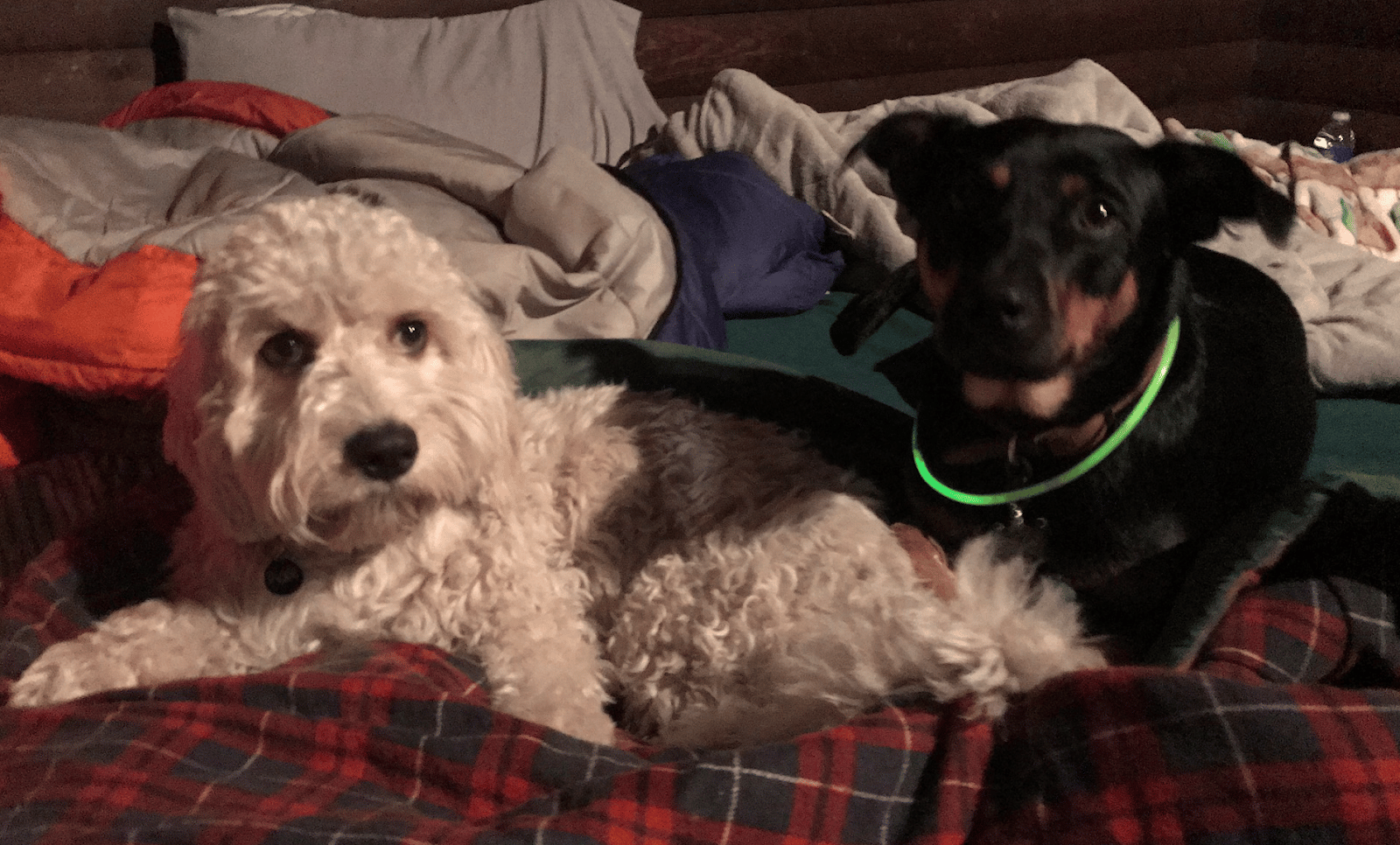
For us humans, electronic automation in your finances has been proven (by science!) to be beneficial for your bottom line. Richard Thaler won a Nobel Prize for his work on this topic.
What are some simple examples of personal finance automation?
- Bill pay. Every month, I pay my mortgage, utilities, and a few other smaller bills automatically.
- Investment contributions. I deduct 401(k) contributions from my paycheck automatically. I contribute to my Roth IRA and brokerage account automatically. Don’t think twice, it’s alright.
- Funding my “future spending” accounts. I’ve got a few different “future expenditures” that I’m saving up for. Vacations, Christmas gifts, the undeniable truth that my beloved Toyota will eventually eat the dust and be replaced. I use my budget to automatically set aside money every month to fund these eventual expenditures.
Don’t let the stress of finances affect your nap time. Sadie sure doesn’t. Just automate.
Identify Mistakes, Then Learn From Them
We already covered that Sadie is the best dog. But, sometimes the best dog is a bad dog! Bad dog!
Thankfully, Sadie is very aware when she’s been a bad dog. She reads human body language like a blaring neon sign. OWNER UPSET, OWNER UPSET, RED ALEERRRRRTTT!!
Where Sadie shines in this regard is that she learns from those mistakes. Her emotional if-then circuitry is on-point. IF poop on floor makes owner upset, THEN no poop on floor makes owner happy.
Unfortunately, we humans like to muddle up this simple logic when it comes to our personal finance. IF buying speaker system leads to credit card debt, THEN buying new Corvette is good investment.
Wait…huh?!
Half the battle is simply learning what’s smart and what isn’t. I’ve written before that personal finance is a dense jungle, but the trail through the jungle is well-defined. If you’re unsure about the smart path through your personal finance jungle, odds are that the right answers are already out there. You just have to go find them a.k.a. use Google.
And then once you find the right answers, you’ve got to execute! Take your knowledge and put it into action.
Sadie has thousands of years of “human = master” evolution guiding her to better behaviors. Your psychology is much more complex. It might take some practice to re-wire your brain towards the best financial behaviors. That re-wiring, my friend, is what learning is all about.
Keep on Smelling. Stay Curious.
Every hole. Every pole. Dead moles and stale rolls. Sadie will smell anything and everything. And once in a while, that persistence pays off. Last week she found a piece of hamburger in the yard, fallen off a plate the night prior. Jackpot! Even when she hits a cold streak of olfactory failure, she keeps on smelling.
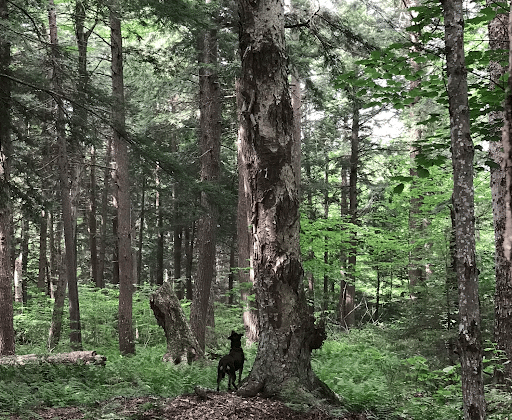
I see two corollaries to personal finance. And no, it doesn’t involve sniffing fresh $100 bills for that “new money scent.”
The first lesson is to keep searching until you find what works for you.
I started budgeting right when I entered professional life. I used an Excel spreadsheet, but found it clunky. After some sputtering, I eventually found Mint. I enjoyed Mint more than my spreadsheet, but found Mint’s automatic categorization inconsistent. And so Mint fell by the wayside too.
Yet my budgeting itch still tingled. I didn’t enjoy being unaware of where my dollars were going. Like Sadie, I kept on sniffing for success. What are other people using, I wondered.
And then I found YNAB. Queue the angelic music. YNAB isn’t for everyone, but it’s certainly for me. All the app asks is that you follow a few simple rules — which turn out to be great habits. And the result is that you receive full knowledge of where every dollar you own is going. You can easily track your net worth. I credit YNAB with saving me hundreds of dollars every month, especially when I first started using it.
And the second lesson from Sadie’s sniffs is simply to remain curious. For you, it’s more about your personal finance education than holes in the ground.
For example: just Google “Buy vs. Rent.” It’s a classic question for the young professional. Do I buy a home, or rent an apartment?
The answers you find will be diverse, conflicting, educational, confusing (and confused), simple, complex, etc. A thousand bloggers — and even a couple experts! — have their opinions whether renting or buying is best and why. And within all those opinions, you’ll find some kernels of truth that apply directly to you.
Sticking with the first answer you find is unlikely to lead you to the best answer. Stay curious, keep learning, and understand why certain answers are what they are.
Don’t Binge Your Resources
Ok, Sadie is still working on this one. Left to her own devices, Sadie will eat a cup of kibble in about 17 seconds, and then promptly look at me for more. Since I want her to maintain her sleek build, I resist her puppy eyes. But it’s tough.
In a way, Sadie’s consumption reminds me of a common financial cautionary tale. Maybe you’re already familiar with it. The trope involves someone spending the majority of their paycheck as soon as they get paid, only to then look elsewhere — presumably with puppy eyes — in need of more money.
Don’t spend all your money in one fell swoop. In food, we’d call that rationing. In money, it’s called budgeting.
I don’t really need to explain it any further. You get it.
Give When You Can, Take When There’s Enough
Note: This is just one stranger’s (a.k.a my) opinion. Don’t take it as gospel. And don’t feel like you need to listen to a dog nor a biased dog-owner.
We first got Sadie as a foster in May 2020 (yeah, we “foster failed,” adopting her ourselves). She was a stray in Houston, found on the street along with her three 6-week old puppies. We (and Sadie) took care of those puppies for another two weeks until they all got adopted out. Yay!

When Sadie arrived, she weighed 26 pounds. This (still) makes me sad.
Sadie’s food intake (a.k.a. street scraps) and energy stores went towards feeding her kids. Not enough was left for Sadie. She was just following her natural hormonal protocol — feed the babies. It probably wasn’t what humans would consider a “conscious choice.” Nevertheless, Sadie gave a lot.
And then she came to our home. We were able to give her plenty of dog kibble, but also eggs, sweet potato, pumpkin, cottage cheese … lots of high-calorie foods that are recommended to help dogs add weight. And Sadie took advantage.
She’s now a healthy 41 pounds. Her fur looks great. She goes on boat rides and camps in the woods. Her name-tag petitions readers to “Rub My Belly!”– it’s her favorite! She’s a long way from the streets of Houston. Great success!
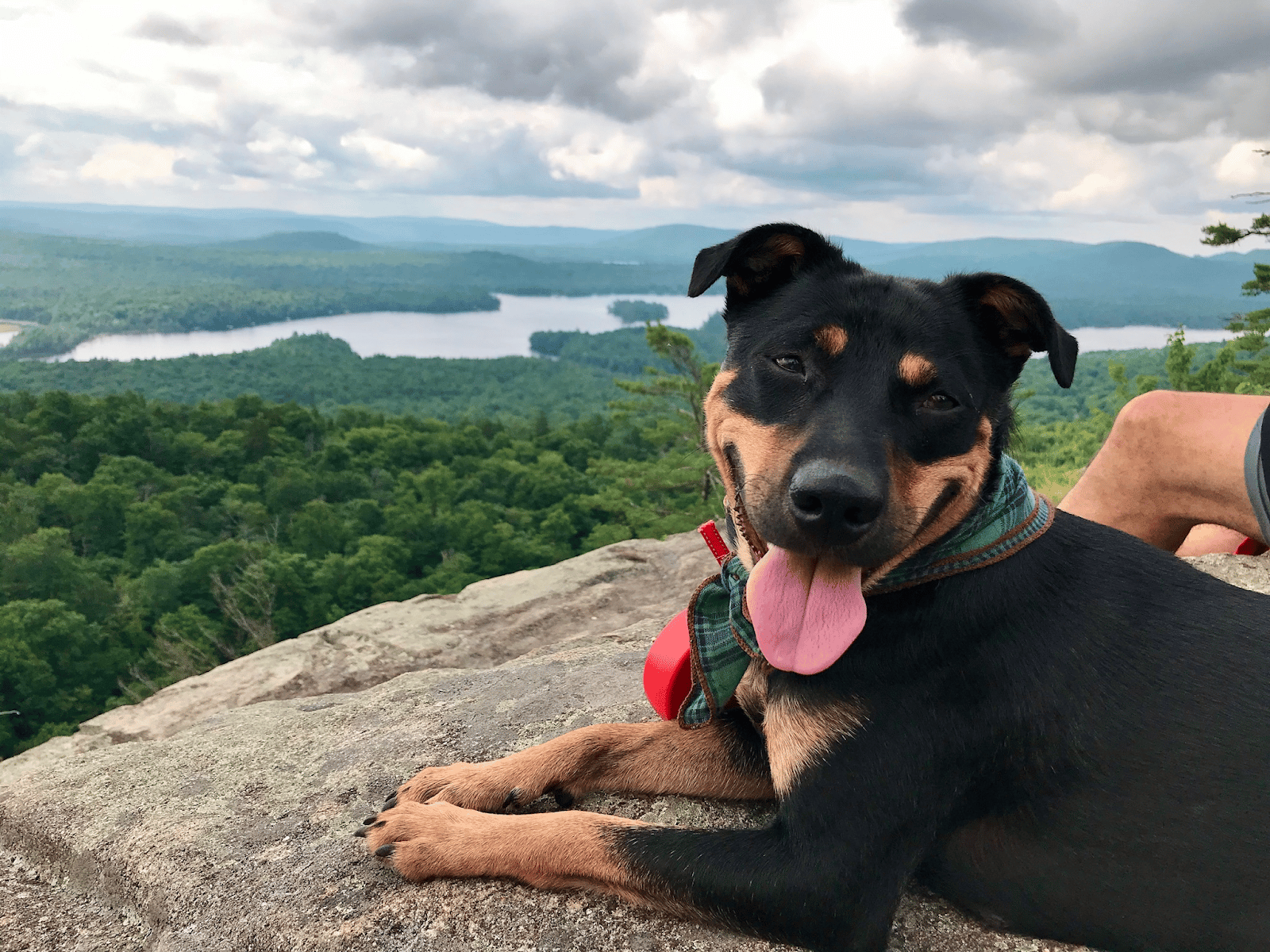
A lot of us (you know, humans) find ourselves on both sides of this story at one time or another.
Sometimes we’ve got enough resources to give them away freely. To lend a hand. To volunteer. Helping others. To give to charity. To rub a belly in need.
At other times, we’re the underweight momma dog looking for any port (pork?) in the storm. And if there are enough eggs and cottage cheese to go around, there’s nothing wrong with taking full advantage of that meal.
Even a dog knows to pay it forward.
The Tail End
It’s nap time for me. This dog’s guide to personal finance is exhausted.
Hopefully Sadie’s adventures will remind you to:
- Bury some money for later
- Automate your personal finances, like instinct
- Know when you’ve f’d up and learn new tricks
- Stay curious — sniff new smells
- Don’t consume all your resources in 17 seconds
- Give when you can
If you’d like to see more dog pics or read more interesting articles (let’s face it…it’s the dog pics), I publish weekly at my own blog, the Best Interest.
Have a great weekend!
Via Finance http://www.rssmix.com/
No comments:
Post a Comment